kirkpoore1
Established Member
On another thread, I got a little razzing for wanting to put my wooden planes on display in the house instead of to work in the shop. Since y'all are so concerned, I figured I'd give you a look at most of them. I'm not an expert in this area, and have done zero research. So I'll let you plane nerds enlighten me on them.
First up, is a matched set of tongue and grove planes, given to me by a friend:

End view:
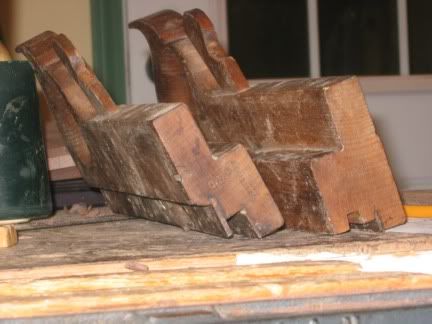
The back side:
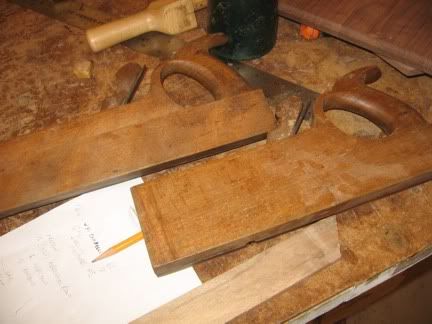
I have no idea on the wood. It's pretty light, and has flecks or rays like oak, but it's not oak. There are several stamps:
"JM Campbell", which is overstruck with "CFC". Maybe JM's son inherited the planes?
Also, very faint, is "J Kellog", with "Amherst MS" (i.e. Massachusetts) below it.
Also present are the numbers 62 and 8.
Nice condition. I haven't measured, but they look set for wood about 1" wide. The groove iron is about 1/4" wide.
Next are my great-great-grandfather's planes. George Parsons was born in England in about 1830, and came to the United States in 1859. I don't know if these planes came with him. He died in 1913, so that places a end limit on their date.
First, a rabbet plane. I'm pretty sure I have the iron for this, though it's not in the plane:
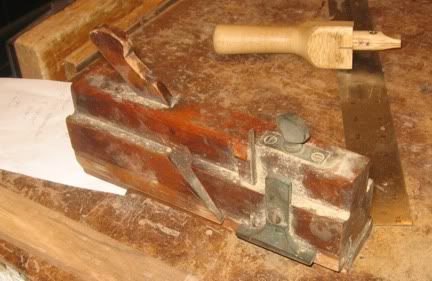
Pretty elaborate, with a brass depth stop, nicking blade, and fence.
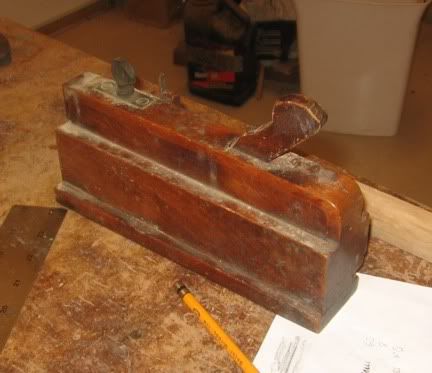
The fence on the underside:
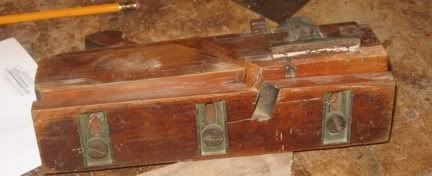
Very nice brass fittings in the fence.
There are several stamps on this one. The plane maker seems to be:
"NELSON"
"15_ Edgewater Road"
(The character after the "15" is illegible.)
Next is "E INGERSENT". This is overstamped with "G PARSONS".
Again, no idea on the wood. I suppose it could be beech. Little visible grain.
George Parsons' second plane is a plow. I have several irons for this one.
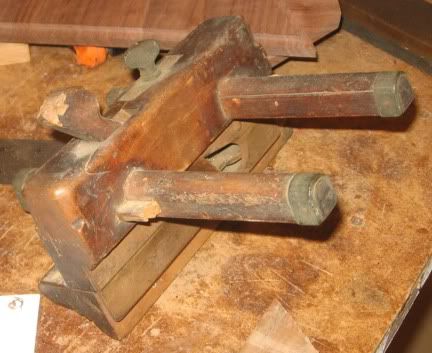
The fence is held by wedges.
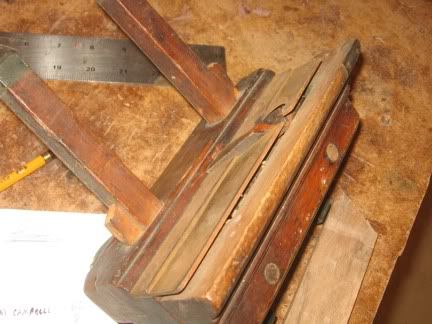
Steel rail on the underside. Brass tip on the leading edge of the fence. This may be later addition, since the wood looks a little damaged behind it. There is also brass on the ends of the fence arms. Not the fanciest plow plane in the world, but also not the cheapest, I'd say. The visible stamps are:
"JOHN GREEN"
"BRIDGES"
"G PARSONS"
Finally, the spokeshave. I actually use this fairly frequently. I've made a few spokeshaves using Hock blades, but they don't have a high angle blade like this one. The sole is pretty worn on this.
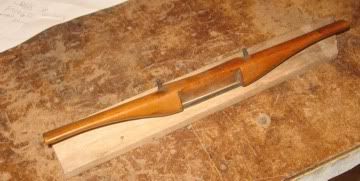
And the underside:
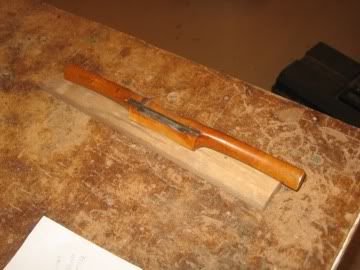
The wood is an extremely fine grain wood. Stamps are:"G PARSONS"
and
"T. Walterace"
"Sheffield"
This one is a great user, and I'm proud to both keep it in the family and put it to use.
I hope you enjoyed the show.
Kirk
First up, is a matched set of tongue and grove planes, given to me by a friend:

End view:

The back side:

I have no idea on the wood. It's pretty light, and has flecks or rays like oak, but it's not oak. There are several stamps:
"JM Campbell", which is overstruck with "CFC". Maybe JM's son inherited the planes?
Also, very faint, is "J Kellog", with "Amherst MS" (i.e. Massachusetts) below it.
Also present are the numbers 62 and 8.
Nice condition. I haven't measured, but they look set for wood about 1" wide. The groove iron is about 1/4" wide.
Next are my great-great-grandfather's planes. George Parsons was born in England in about 1830, and came to the United States in 1859. I don't know if these planes came with him. He died in 1913, so that places a end limit on their date.
First, a rabbet plane. I'm pretty sure I have the iron for this, though it's not in the plane:

Pretty elaborate, with a brass depth stop, nicking blade, and fence.

The fence on the underside:

Very nice brass fittings in the fence.
There are several stamps on this one. The plane maker seems to be:
"NELSON"
"15_ Edgewater Road"
(The character after the "15" is illegible.)
Next is "E INGERSENT". This is overstamped with "G PARSONS".
Again, no idea on the wood. I suppose it could be beech. Little visible grain.
George Parsons' second plane is a plow. I have several irons for this one.

The fence is held by wedges.

Steel rail on the underside. Brass tip on the leading edge of the fence. This may be later addition, since the wood looks a little damaged behind it. There is also brass on the ends of the fence arms. Not the fanciest plow plane in the world, but also not the cheapest, I'd say. The visible stamps are:
"JOHN GREEN"
"BRIDGES"
"G PARSONS"
Finally, the spokeshave. I actually use this fairly frequently. I've made a few spokeshaves using Hock blades, but they don't have a high angle blade like this one. The sole is pretty worn on this.

And the underside:

The wood is an extremely fine grain wood. Stamps are:"G PARSONS"
and
"T. Walterace"
"Sheffield"
This one is a great user, and I'm proud to both keep it in the family and put it to use.
I hope you enjoyed the show.
Kirk

































